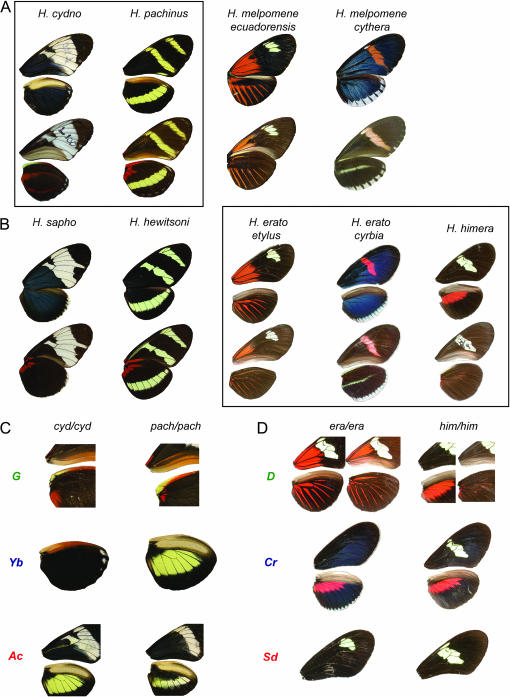Figure 1.—
Mimicry and mimicry genes in Heliconius butterflies. (A) Four phenotypes (dorsal, top; ventral, bottom) from three species belonging to one major Heliconius clade. H. cydno and H. pachinus (shown in a box) were crossed to study color pattern genetics from this clade. (B) Five phenotypes from four species belonging to the second Heliconius clade are shown below their respective comimics; H. himera does not have a corresponding comimic. Crosses between H. himera and each of the two H. erato races (shown in a box) were used to study color pattern genetics in this clade (Tobler et al. 2005; Kapan et al. 2006). (C) Effects of alternative alleles at three color-patterning loci that distinguish H. cydno and H. pachinus: G controls whether the ventral base of the fore and hind wings is red or brown, Yb controls the presence or absence of melanic scales on the hind wing, and Ac controls the presence or absence of melanic scales on the proximal portions of both the fore and the hind wings. (D) Effects of alternative alleles at three color-patterning loci that distinguish H. erato and H. himera: D controls the distribution of red/orange scales on the wings (DetDet vs. DhiDhi shown), Cr controls the placement of melanic scales on the fore and hind wings (CrcyCrcy vs. CrhiCrhi shown), and Sd controls the portion of the forewing that is covered in melanic scales (SdetSdet vs. SdhiSdhi shown).

